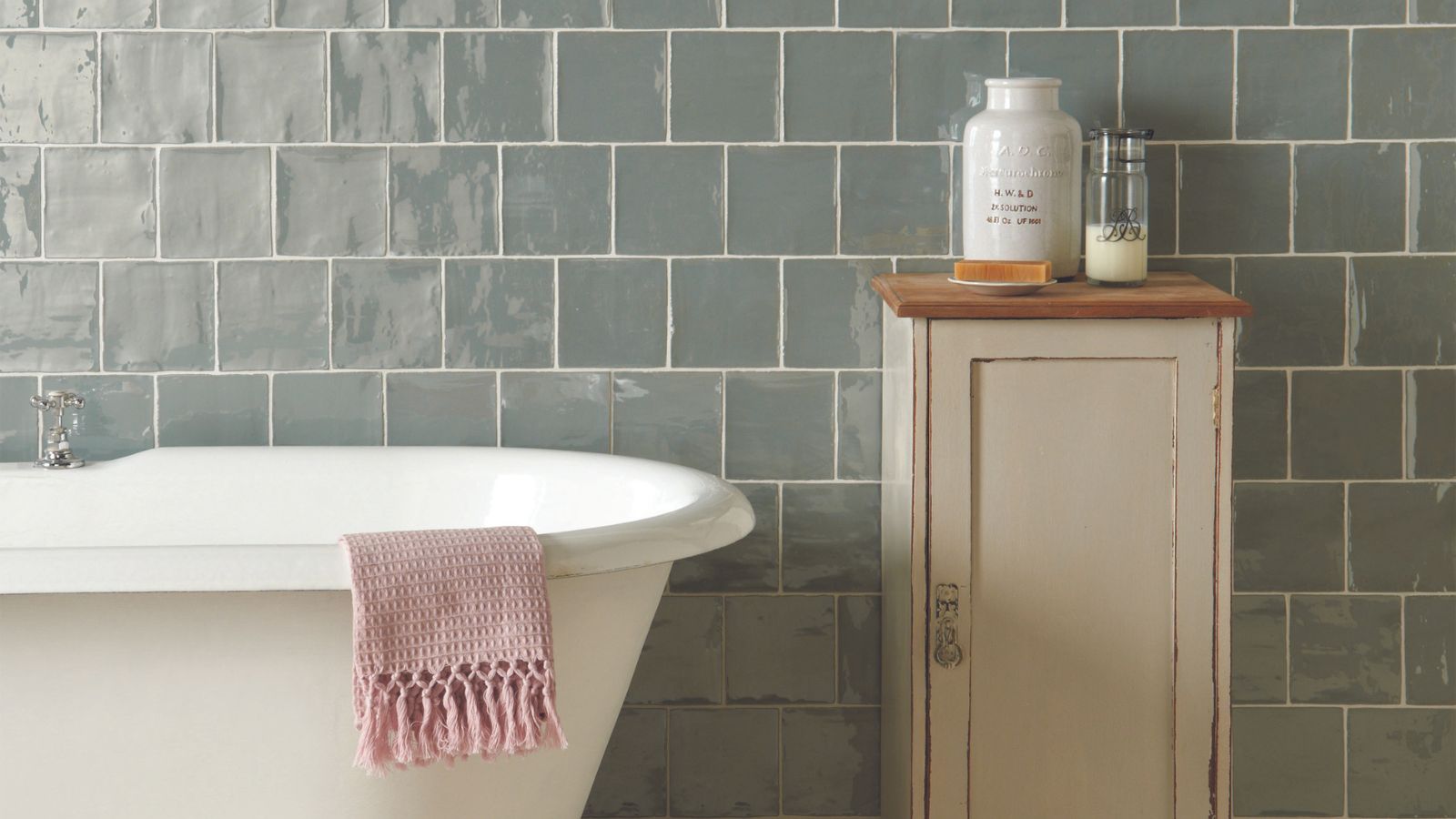
When it’s time for new tiles, it's not uncommon to debate between porcelain vs stone. Especially if you’re looking for a lavish finish, as both add a distinctive and luxury feel to a space.
Our experts say things to consider when choosing should include the desired finish, budget and a host of factors concerning the function of the room the tiles are going in. Do you need a water resistant finish? Are you looking for the natural look? Will you install it yourself?
Here our panel of experts share the differences, pros and cons and more to help you pick the right type of tile for your project or renovation.
Porcelain vs stone tiles
If you’re tackling tiling as a DIY project and have little experience, then porcelain tiles are the better choice as Dave Marrs, National Contractor for Re-Bath shares. 'Porcelain tiles are more beginner-friendly and generally easier and quicker to install. While stone tiles can give more character to your space, they often require more experience, effort, and attention to detail.’
But don’t make your mind up just yet. We have more expert insight to help you choose which material will work best for your needs.
What are the key differences between porcelain and stone tiles?
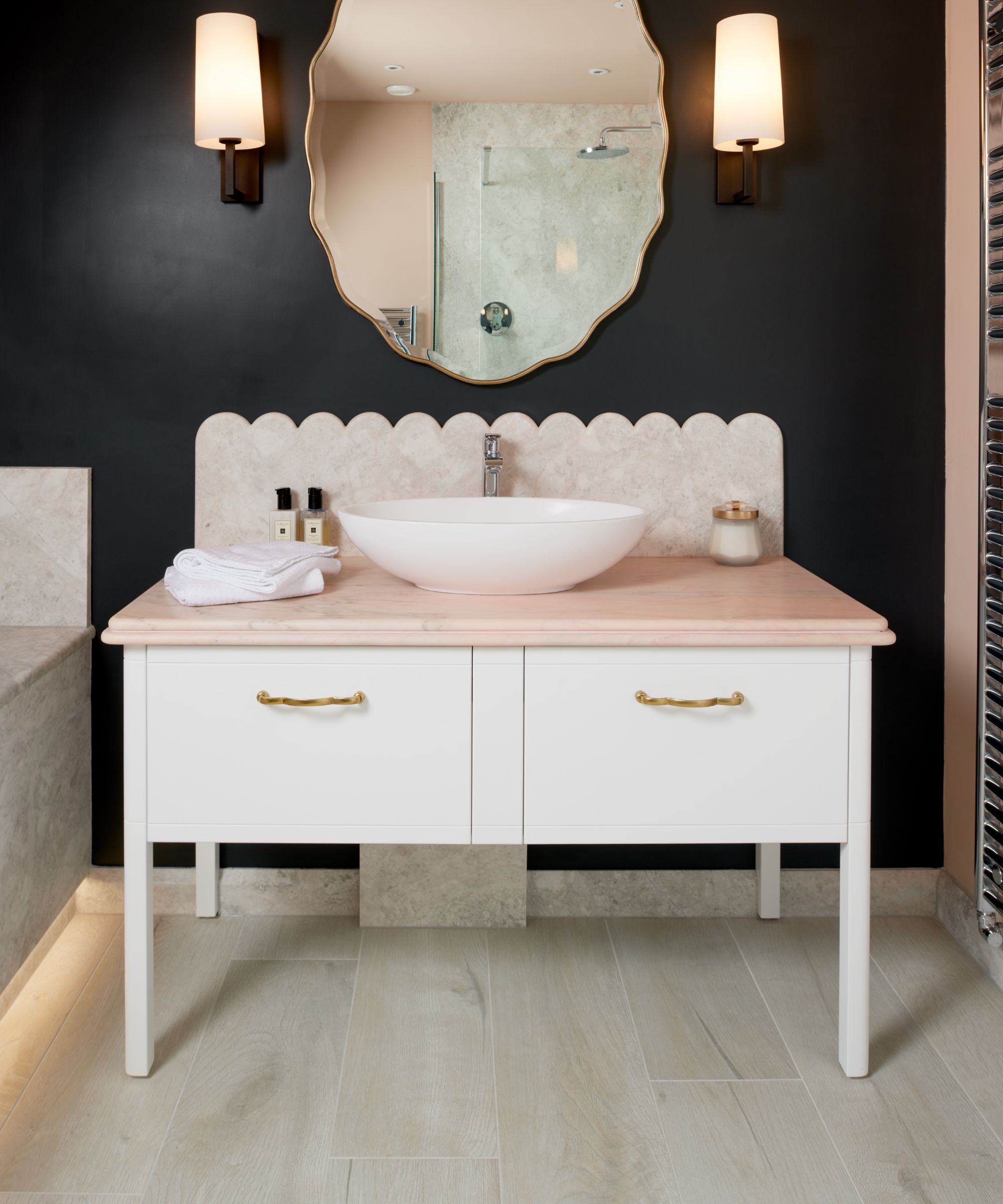
The main differences between these two types of tiles lies in their makeup. Jay Sanders, owner of Castle Walls Basement Waterproofing explains, ‘Porcelain tiles are made of a mix of clays and minerals, whereas stone tiles are naturally occurring.’
Dave Marrs, National Contractor for Re-Bath adds, ‘Porcelain tiles are made from refined clay and other natural materials, fired at extremely high temperatures, making them dense, durable, and non-porous while stone tiles are natural stone quarried from the earth and can be made from materials such as marble, slate, granite, limestone, and travertine.'
The material and how the tiles are manufactured makes a difference to their finish. Sanders says, ‘Porcelain tiles have customary matte and glossy finishes, while stone tiles have polished, honed, or textured finishes.
He adds that one is often available in larger formats, ‘Porcelain tiles typically have bigger ones, up to 48 x 48 inches, such as the Sensi Roma Satin Porcelain Field Tile from Amazon, while stone tiles are typically smaller in size.’
Pros and cons for porcelain tiles
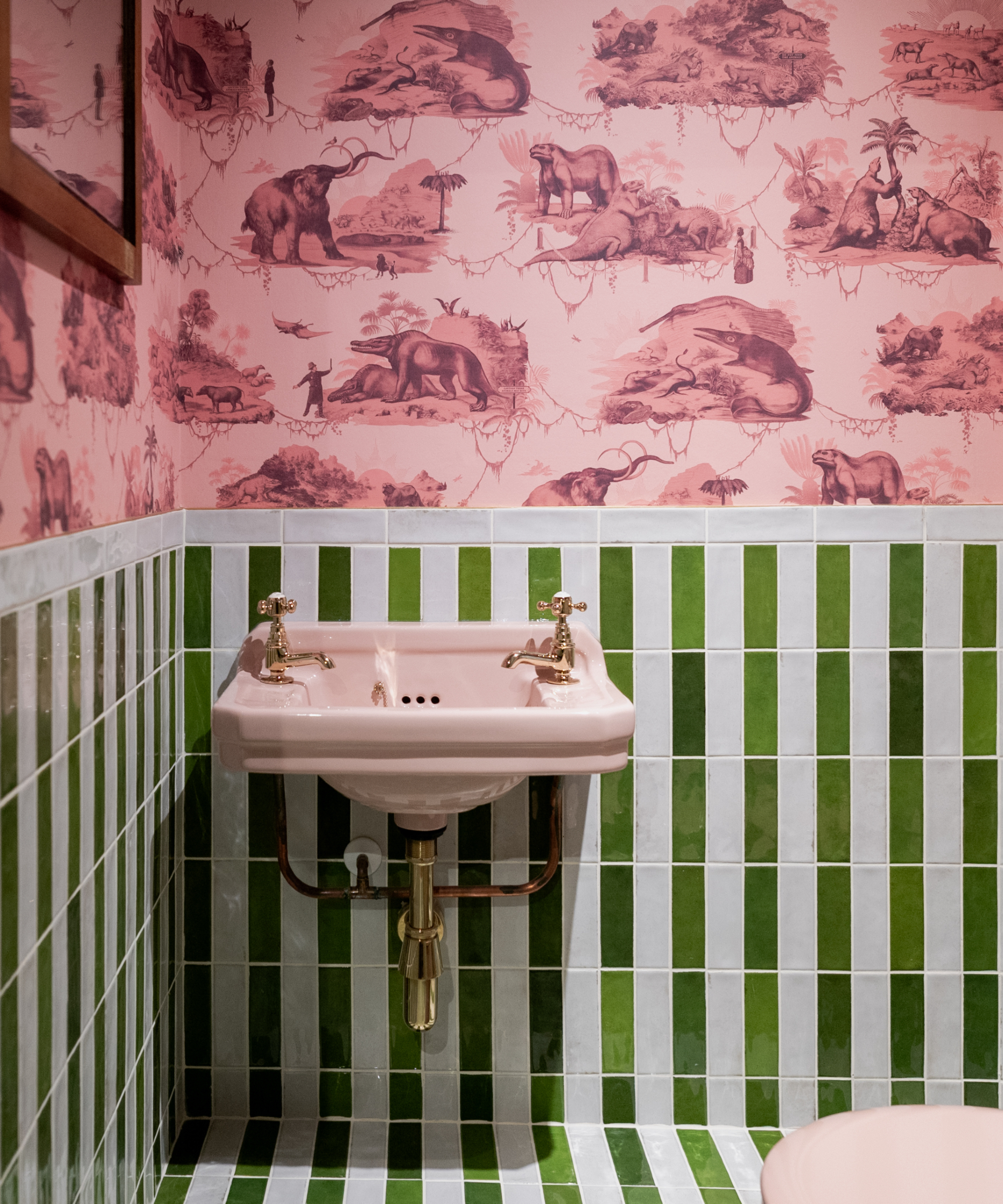
- + Durable and water resistant: Highly durable, porcelain tiles have a non-porous surface which makes an ideal choice for area with high levels of moisture such as a bathroom.
- + Easy to maintain: Porcelain is resistant to scratches, chips, and general wear and tear. They typically just need regular cleaning to keep in good condition.
- + Design options: Available in a wide variety of colors and designs including the ability to mimic some natural stone tiles and even wood.
- - Can be cold: Porcelain tiles do not retain heat very well and can be uncomfortably cold under foot in cold climates, but refreshingly cool in warmer climates.
- - Slippery: Porcelain can be slippery when wet, especially tiles with a gloss finish. Choose a textured finish or treat with a specialist anti-slip coating for moisture-prone areas such as bathroom floors.
Pros and cons of stone tiles
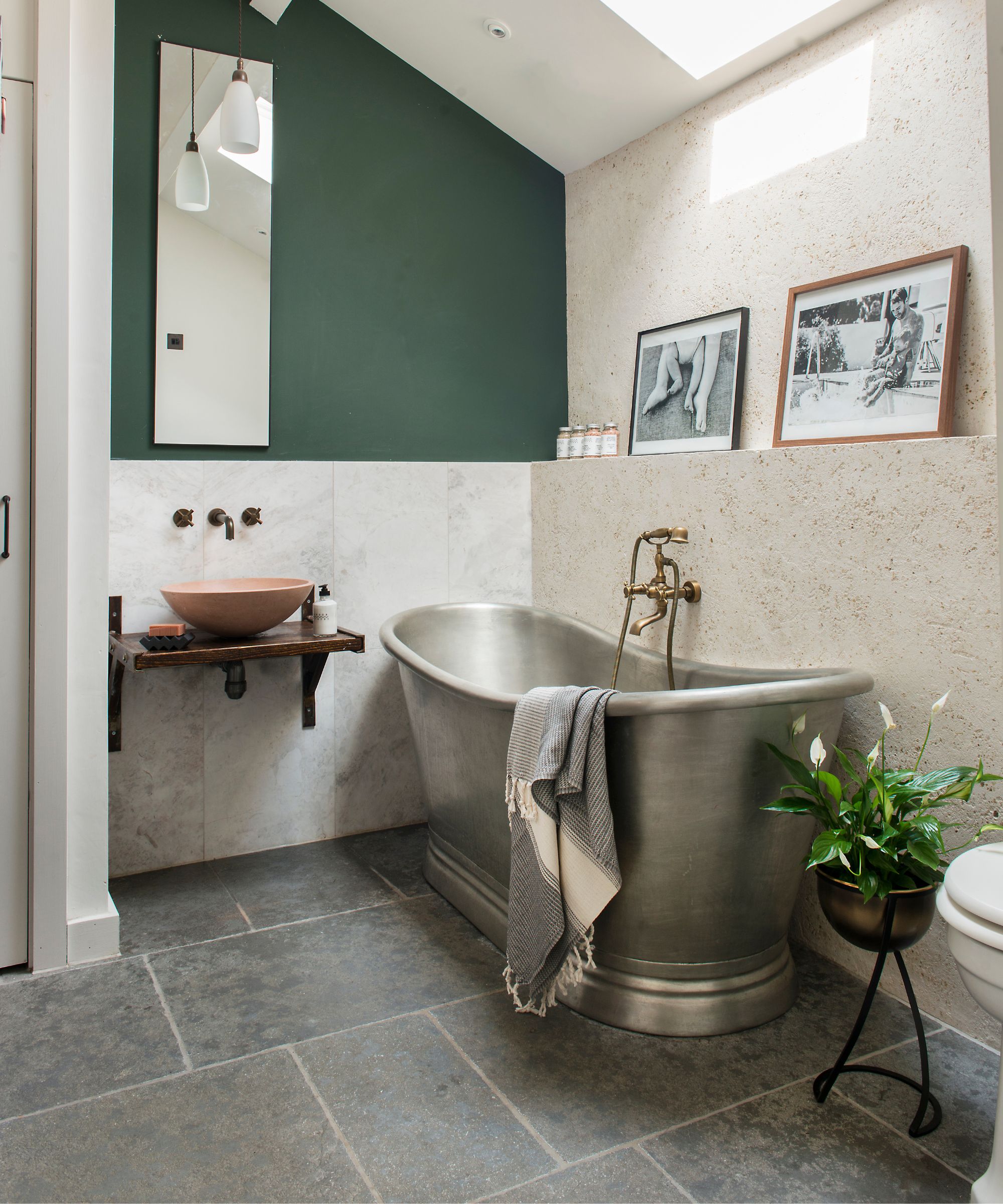
- + Long lasting: Generally durable and hard wearing, but will depend on what type of stone you use. Some last longer than others and need regular sealing and maintenance.
- + Premium option: Typically more costly than porcelain tiles, stone tiling is considered a premium option that can add value to a home.
- + Natural appeal: The natural variations in colors, texture and finish will give a unique and distinctive appearance.
- - More complex installation: Stone tiles are traditionally more difficult to work with and will need an experienced installer to do a good job.
- - Staining: Natural stone is prone to absorbing liquids which can lead to stains if not sealed.
Where can I use porcelain tiles?
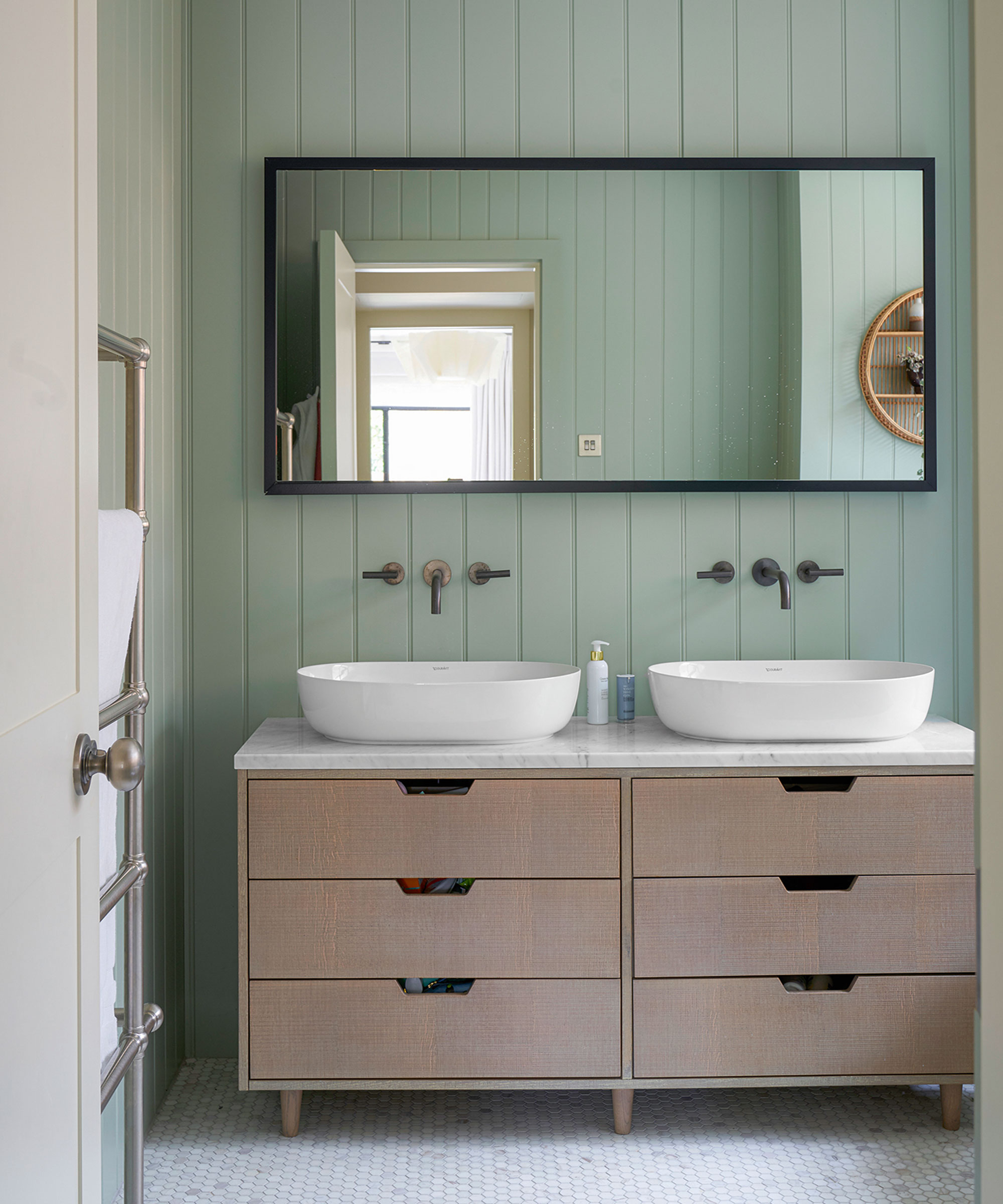
Porcelain can be used in a variety of places thanks to their strong composition as Marrs shares, ‘Porcelain is great for flooring in high-traffic areas because of its durability and scratch-resistance as well as water-resistance.’
And it’s porcelain's ability to resist water that makes these tiles ideal for certain areas in the home. Marrs explains, ‘Porcelain tile is extremely non-porous and water-resistant, making it perfect for showers, wet areas and bathrooms.’
But it’s not just these areas that are a good choice for porcelain tiles, as Marrs explains, ‘Porcelain tiles can be found in kitchens, entryways and mudrooms, living areas, and outdoor areas because of their resistance to various weather and climate conditions.‘
Sanders adds, ‘Plaster, brick, and drywall are surfaces which porcelain tiles may be applied to, and countertops are a popular use for porcelain tiles.'
Where can I use stone tiles?

Stone tiles offer good versatility and can be used almost anywhere as Sanders shares, ‘Stone tiles can be used as flooring, on walls, and even countertops. They are often found in kitchens, entryways, bathroom floor ideas, and outdoors, providing a more organic or natural look to a room or area.’
Like porcelain tiles that can be applied to most surfaces including plaster, brick, and drywall. However, if they are installed on plaster walls you need to consider weight and get the preparation right as Marrs explains, ‘Stone tiles can be applied to plastered walls, but they must be installed with proper adhesives to handle the tile weight.’ He adds, ‘Additionally, stone can be used over brick surfaces, commonly for fireplaces or exterior walls.’
If being used in areas prone to moisture Marrs suggests the right substrate need to be used, ‘Stone tile can also be applied to drywall, but like porcelain, moisture-resistant drywall (green board) is recommended for areas like kitchens or bathrooms.’ He adds, ‘Stone tile can easily be installed over concrete floors or walls, making them perfect for basements or outdoor patios.’
Learn more about how to remove wall tiles in preparation for your DIY project.
FAQs
Which tiles are easier to install, porcelain or stone?
Porcelain tiles are considered easier to install as Sanders shares, ‘Porcelain tile installation is often easier, because the tiles are always uniform in size and shape.’ Marrs adds, ‘Porcelain tiles are manufactured rather than naturally sourced, so stone tile tends to be more irregular in thickness and texture.’
He adds, ‘Porcelain uses standard tile adhesives that require less prep work compared to stone,’ again making them easier to install.
But it's not just size and shape that makes a difference as Marrs explains, ‘Stone tiles are much heavier than porcelain, making them more difficult to transport, handle, and install. Plus, stone also needs to be sealed before and after installation, making the installation process lengthier than porcelain.’
Another consideration is installation costs with Sanders giving a ball park figure, ‘The average installation costs for porcelain tiles range from $5-$15 per square foot, while installation costs for natural stone starting at $7-$20 per square foot.’
Which tile is more durable, porcelain or stone?
Both tiles are very durable and should last a lifetime, especially if they are cared for properly. Sanders says, ‘Porcelain tiles are more resistant to wear, stains, and moisture when related to stone tiles, and can generally last anywhere from 50 to 100 years.’
He adds, ‘Stone tiles are also pretty resilient but they do require the appropriate care and maintenance to see through their lifetime. With good care, stone tile can be expected to well exceed 100 years’
Whatever you choose for your latest tiling project, both porcelain and stone should last as long as you want if well looked after and maintained properly. This can be a real money saver as you won't need to change unless you want to.
Learn more about tile layout patterns to help you start planning.
Do porcelain tiles make a room colder?
Yes and no. Sanders says that, ‘Porcelain tiles don’t necessarily make a room colder.’ However, this depends very much where and how they are installed as Sanders continues, ‘They retain heat well, when paired with underfloor heating.’
But, when used in different scenarios they have different advantages as Marrs explains, ‘Porcelain tiles can cool the temperature of a room which is a benefit in warmer climates during summertime.’
If your porcelain tiles are installed in a bathroom or similar areas you typically need underfloor heating to keep them warm. The alternative is to use trendy rugs to add a level of warmth and comfort.
If looking to invest in porcelain or stone tiles, we have dedicated guides for bathroom tile ideas.







